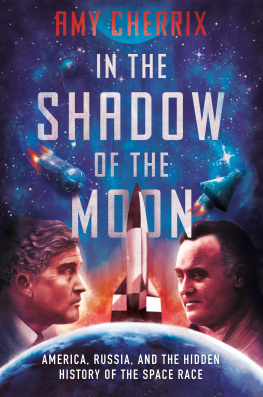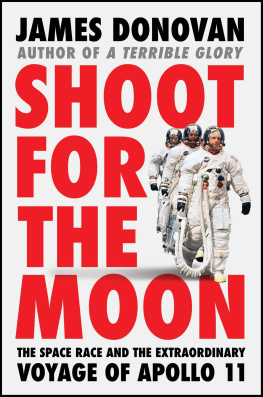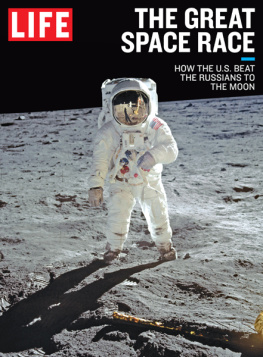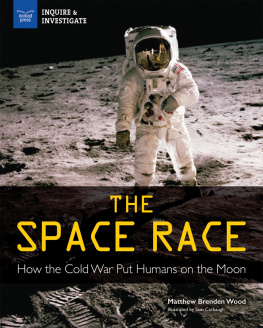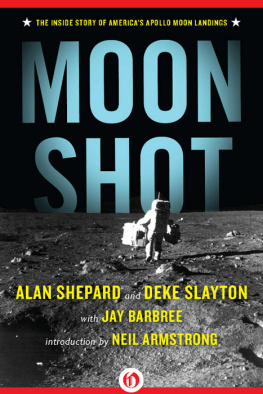
As the two great superpowers, America and the Soviet Union, confronted each other during the Cold War, the race to the moon became a defining part of the struggle for global supremacy. Victory in this race meant more than just collecting moon rocks or planting flags on a barren wasteland. The development of missiles and rockets went hand in hand with the struggle to develop the capacity to deliver nuclear weapons, to spy on the enemy and to control space. Above all, the space race became an open contest between capitalism and communism. Victory was not just a matter of pride. National security and global stability were at stake.
The architects of this race were two extraordinary men destined to operate as rivals on two different continents at the height of the Cold War. Both were passionate about transforming their dreams of space travel into a reality yet both were cynically used and manipulated by their political paymasters as pawns in the wider conflict between the two superpowers. Both were men of their times but with visions that are timeless. Both were hampered by the legacy of a past which returned to haunt them, threatening to destroy the achievement of their dreams. One had collaborated with the Nazis to produce rockets in slave-labour camps during the Second World War. The other had been denounced as an enemy of the people, swept up in Stalins purges and incarcerated in the Gulag in appalling conditions. Yet their ingenuity and vision would inspire the greatest race of the twentieth century: the race for the mastery of space.
For much of his life, the Russian Sergei Pavlovich Korolev was obliged to live in almost complete obscurity. Referred to as simply the Chief Designer, his name was obscured in the official records, never mentioned in the press and was virtually unknown to the public in his native country during his life. Such was the paranoia in the Soviet Union that this brilliant scientist might be assassinated by Western intelligence, he was shadowed constantly by his KGB aide. When his bold exploits in space produced national celebrations in Red Square, he rarely appeared on the balcony beside the Soviet leaders and received none of the national acclaim for his achievements. Often working in harsh conditions deep within the Soviet Union, short of resources and at times challenged by jealous rivals, he pursued his quest relentlessly, with no regard for the enormous toll this took on his personal life. In the early years as Chief Designer of the Soviet Unions missile programme, Korolev understood that Stalin controlled his fate. Lavrenti Beria, Stalins notorious Chief of Secret Police, was watching. False rumours, repeated failures or simply incurring displeasure could finish him at any moment. His family life destroyed by his long sentence in the Gulag, and with the loss of friends and colleagues during Stalins purges, Korolevs future held no certainty. But now, with the release of classified information in Russia, for the first time the true story of this extraordinary man can at last be pieced together.
From his place in the shadows, Sergei Korolev was well aware of his rival in America, the charismatic Wernher von Braun. With his film-star good looks, his aristocratic manner, his brilliance in inspiring others, von Brauns smiling face often appeared in the American press and his ideas were studied closely by Korolev. Yet through all his glory years of success at NASA designing rockets that came to symbolize the might of America, von Braun carried a secret from his work as a Nazi during Hitlers Germany. During the Second World War, thousands of slave labourers had died of disease, starvation and neglect, or had been executed at the slightest whim of their SS guards while building the rockets that von Braun had designed to win the war for Nazi Germany. Sinister details of his assignment to save the Third Reich as Hitlers leading rocket engineer were classified after the war by the US authorities under the codename Project Paperclip so called because a paperclip was allegedly attached to every file which was to be whitewashed. Von Brauns own secrets have only recently been unravelled.
These two men Sergei Pavlovich Korolev in the Soviet Union and the former Nazi, Wernher von Braun in America were both obsessed by the same vision of breaking the bounds of gravity and reaching the moon and beyond. In every century men were looking at the dark blue sky and dreaming, Korolev told his wife. And now Im close to the greatest dream of mankind. Both found their ideas were way ahead of their time. When Sergei Korolev campaigned simply to speak publicly about launching the worlds first satellite, a second moon, to the Academy of Artillery Sciences in 1948, he was repeatedly opposed, his ideas being dismissed as dangerous dreams. Such notions had no place in Stalins Soviet Union. As for von Braun, his vision of launching rockets and exploring the universe was considered so far-fetched in America even by the early 1950s that the only professionals who would take him seriously were those in the film industry.
In the 1950s, President Dwight D. Eisenhower feared that the Soviet Union would regard the development of rockets by America that were capable of putting men into space as a hostile military act. If men could be launched into space, so could spy satellites and nuclear warheads. The fragile peace between the Soviet Union and America could be blown apart. However, by 1957, much to the American publics consternation, the Soviet Union took the lead in space. Sputnik inspired terror a Soviet satellite was flying over America. The US was in a race for survival, declared the New York Times. Away from the publics gaze, Americas politicians and military elite panicked. They were horrified by the lead the Soviets had apparently developed in space technology.
As the Cold War escalated in the 1960s and the need for increasingly sophisticated weaponry grew, their ideas were no longer confined to the realms of science fiction. Both men endured enormous pressure from their political masters to win one of the most fiercely contested battles of the Cold War. Against this backdrop, the world struggled to come to terms with the constant threat of nuclear war. The Cuban Missile Crisis of 1962 brought the world to the very brink of disaster, the war in Vietnam raged on and the nuclear arms race threatened to spiral out of control. In the Soviet Union, Red Army troops were trained for nuclear combat; in the United States, citizens built nuclear shelters as weapons of such explosive power that they could wipe any European city off the face of the earth in one blast were being mass-produced.
The race to the moon was to become one of the defining events in the titanic struggle between two superpowers. With the release of records from the former Soviet Union it can now be shown just how close the Soviet Union came to winning this race. Although they lived on separate continents and never met, Sergei Korolev and Wernher von Braun became powerful rivals, locked in an unparalleled contest. Both men were prepared to sacrifice everything to claim the moon and the glory that went with it. But there could only be one winner.
It will take 30 hours to get to the moon and 24 hours to clear Russian customs officials there
BOB HOPE, 1959
CHAPTER ONE
The Black List
In the mid-winter of 1945, the war in Europe had reached its final stages. Germany was crumbling under continued heavy Allied bombing. Cities were being obliterated, magnificent buildings returned to their original elements of so much stone, sand and lime. The massive Allied raids had demolished towns and cities on such a scale that Bomber Command was running out of significant targets. The attack on the Western Front was unrelenting, the dark shapes of Allied soldiers slowly advancing across occupied lands. The Rhine would soon be in Allied hands. From the east, with an unstoppable fury, the Soviets were approaching. In January 1945, the Red Army launched a massive offensive as 180 divisions overran Poland and East Prussia. Berlin was in their sights.



